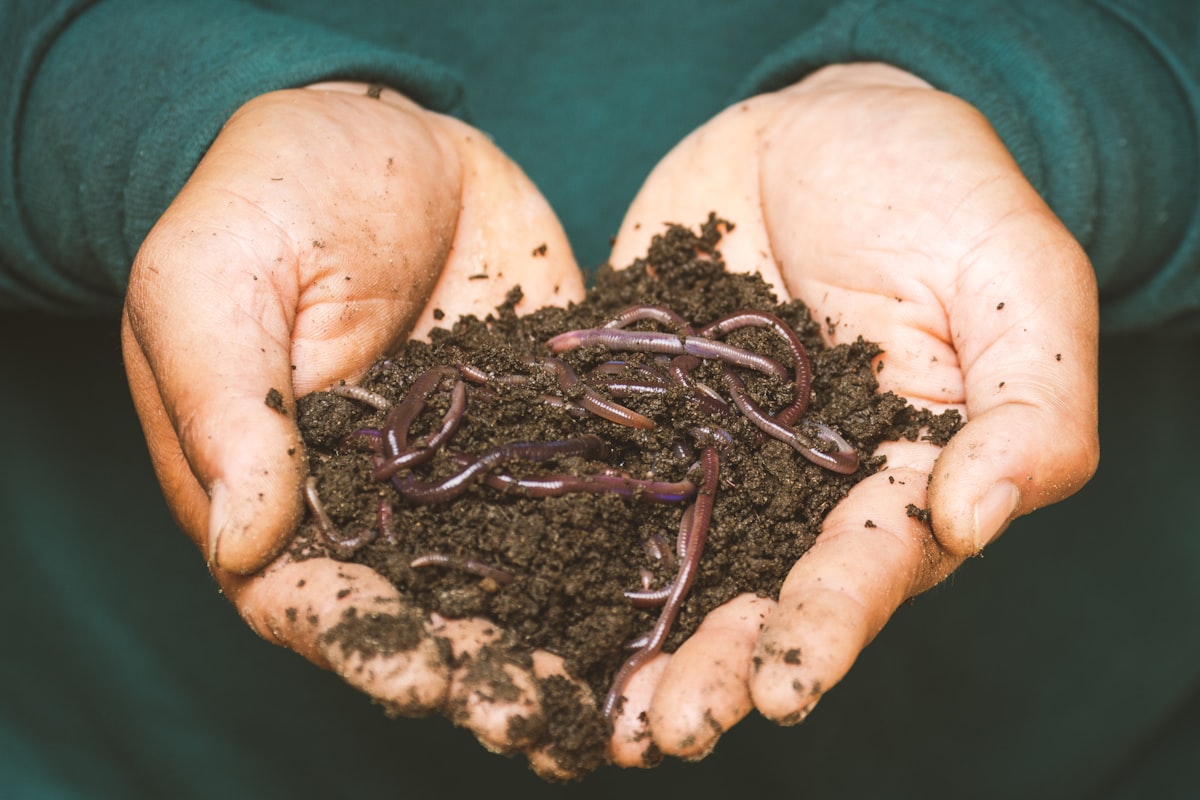Worms for brains
Having our kitchen scraps and eating them too

Worms, depending on the species, can live for months in the fridge if properly kept. In high school, when I worked at a local general store situated at the southern tip of Lake Bomoseen, we would periodically open up the plastic tubs of worms to see if they were still alive. If you tore off the lid and saw movement, they were good to back to purgatory, waiting for the sweet release of death one way or another.
My sister had to buy a tub of these worms once—I’m sure of it, despite the fact that no one in my family seems to remember—for a science project. Something about the worms having brains, or what passes for worm brains, on both ends of their bodies. Place a worm on a table, cover one half with a piece of paper, and shine a light on the exposed end. It’ll wriggle and attempt to get away from the light, no matter which end is covered.
At least, that’s what I remember from the experiment—but it probably has more to do with primitive light receptors than brains. Despite the popular schoolyard myth, you can’t cut an earthworm in half and have both halves regenerate. If you cut it just right, the head—most worms do have a distinctive head, it turns out—might be able to regrow a tail. Most likely, the worm will just die.
I’ve had a bee in my bonnet—or a worm in my waistcoat—about worms all weekend. I was in Vermont visiting my parents and tending to their neglected compost pile. Composting and reading about composting comprise about 70% of my day when I visit home. These days, most of my parent’s food scraps end up in a bokashi bucket I bought them to make it easier to compost in the winter. An entire bucket of food scraps can be reduced to a small pile of fermented waste thanks to microorganisms.
The cold compost pile at the edge of their yard is now mostly dirt and almost completely inert. I dug through the side of the pile and quickly hit “black gold”—the finished product after years of decomposition. I piled in some more kitchen scraps—avocado peels, corn cobs, strawberry tops—a stack of elementary school awards, and some bokashi product (which needs to be finished in a compost pile before it can be introduced to plants). Before I left, I asked my parents to add some grass clippings and dump in a plastic tub of earthworms.
There’s a whole method to using worms to compost—vermicomposting, if you want to Google it—but you can also just add worms to an existing cold compost pile and let them have at it. In a worst-case scenario, the worms will simply crawl under the bottom of the compost bin to freedom and aerate the lawn. Hopefully, though, they stick around for a bit, have their fill, and leave behind their bio-available poo.
Perhaps unsurprisingly, there’s a whole genre of YouTube video that is just time-lapse footage of worms working their way through compostable materials:
I love watching these little guys work. It’s the same joy I get out of watching videos of ant farms—here are these little creatures, doing their thing, usually completely invisible to us but now, thanks to the magic of technology and some clear plastic, observable, knowable. Maybe it feels a little weird to put worms to work—entertaining us, eating our food scraps—but I have to imagine it’s better than the other human job out there (fish food).
I’m back in New York now, and who knows the next time I’ll see a worm. If I had to guess, it’ll be in a park after a rainstorm. Worms, pushed up to the surface by moisture, will try to escape across asphalt, only to get stranded once it stops raining. There, too, is a kind of purgatory. Maybe a bird will come and scoop them up, a nice fat meal for a chick. Or maybe they’ll just dry out into a wormy husk. Maybe—god-willing—they’ll drag themselves over to dirt and burrow under the cool, moist surface.




